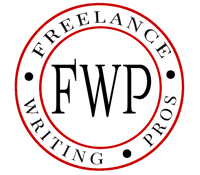
Disclosure: This post contains an affiliate link to a third-party competitive analysis tool: SEMRush. That means if you click that link and choose to subscribe to their services, I would earn a commission.
In the freelance writing community, “competition” is often treated like a dirty word. The idea of doing a competitive analysis can be seen as malicious or underhanded. But it’s not. It’s good business.
I’ve known many freelance writers who act like there’s a hard line between “competitors” and “colleagues.” But you don’t have to choose one or the other. We’re often both. And that’s OK.
Why Conduct a Competitive Analysis?
Doing market research into your competition is about awareness and understanding how prospects see you.
Even if you don’t like thinking about others as competitors, your prospects will. They’ll pit you against each other when comparing options on everything from your experience to your rates.
Essentially a competitive analysis gives you a better idea of what those prospects see when they find you, and what they see when they find those other options they might hire.
That, then, puts you in a position to make changes where necessary. It helps you convey the image you want to. And it gives you a more objective picture of the state of your freelance writing business.
Let’s look at how you can conduct your own competitive analysis, broken into five simple steps:
Step 1: Identify Key Competitors
The first thing you’ll want to do for your competitive analysis is identify key competitors from other freelance writers in your specialty market.
You might already know some of these people because they’re colleagues. Or you might know who you directly compete with for specific clients or gigs.
You’ll want to identify at least five key competitors, but I recommend starting with ten if you can find them. You’ll narrow this down in the next step.
To do that, start with the following questions and searches:
- Who shows up in Google’s results when seeking a writer in your specialty?
- Who shows up when you search LinkedIn?
- What competitors do you know through your network?
Remember to focus on your specialty & target market, not random freelance writers with vague similarities. You’re looking for people who might target the same clients, at similar rates, for the same projects that you would.
Step 2: Browse the Competition’s Websites
Once you have some key competitors in mind, it’s time to visit their freelance writer websites (not niche blogs, but where they target clients). The idea is to gather public information to:
- verify these freelance writers really are your direct competition;
- learn more about their overall business and marketing strategies.
Your aim isn’t to do everything they do, but rather to seek inspiration and give yourself things to think about when it comes to making changes to your own freelance writing business or marketing plan.
When you review another freelance writer’s website for the sake of a competitive analysis, here are some of the questions you’ll want to ask (and answers you’ll want to seek):
- What services do they offer?
- What rates do they charge?
- Which kinds of businesses have they worked for (are they truly your direct competition)?
- What kind of marketing are they doing (white papers, brochures, free e-books, free downloads, sales/discounts, an email list, etc.)?
Having this information available should help you narrow down your list of 5-10 competitors until you have 3-5 that are reasonably close matches to what you offer. Remember these should be peers, not writers at a significantly different stage in their career.
Step 3: Seek Out Competitors on Social Media
Now that you’ve narrowed down your list of direct competition, you can dive a bit deeper into your competitive analysis. Move on to their social media presence.
Their website most likely contains links to the social media profiles they associate with their business in some way. Review those. Their personal accounts aren’t your concern here.
Here are some things you’ll want to take note of:
- What kind of content do they share?
- Do they directly interact with clients and prospects?
- Do they use social media more for professional networking with colleagues?
- How often do they post?
- Do they use social media for broadcasting or for two-way conversations (how much of each)?
- Can you learn anything else about how they market themselves, how they set their rates, how they find gigs, or how they build visibility?
List elements of your competition’s social media outreach that you like, and areas you think could be improved. Ask yourself how your own social media presence stacks up. And decide what you can do to improve moving forward.
Note: You might be tempted to focus on how many followers or “friends” your competitors have on social media. Don’t.
These are vanity metrics that have little to no impact on true influence – their ability to drive people, like prospects, to action.
Those numbers are often artificially inflated due to things like follow-back schemes and incentivized follows, and large follower numbers rarely represent prospects. They more likely represent readers of their blogs or freelance contributions which are irrelevant for this competitive analysis.
Step 4: Check Your Competition’s Search Engine Savvy
Next you’ll explore your competitors’ search presence.
There are tools that can help you do this, which I’ll talk about more in this week’s newsletter. And in my next post here I’ll share a more in-depth look at one of those tools: SEMRush.
For now, we’ll keep things simple:
- List a few keyword phrases your target clients would likely use when searching for a freelance writer like you.
- Run those searches yourself in Google.
- Take note of which competitors rank on the first page of search results.
- Take note of where your own professional website ranks in those results (your search visibility).
- Also note where your identified competitors rank.
If you’re already outranking your competition, great. If not, you know this is an area you need to work on. Search visibility is a vital part of attracting well-targeted clients. It doesn’t get any better-targeted than people literally searching for you based on what you do, and searching when they know they need to hire.
Step 5: Complete a SWOT Analysis
After you’ve collected information about your competition, it’s time to put it all together into something useful: a SWOT analysis.
A SWOT analysis simply means you’ll look at your:
- Strengths
- Weaknesses
- Opportunities
- Threats
These are in relation to your competition. It requires honest reflection. Saying “I have no weaknesses” is always a lie.
Your SWOT analysis is the bridge between your basic competitive analysis and the action you’ll take.
Example SWOT Analysis for an Experienced Freelance Writer
Let’s look at a hypothetical SWOT analysis for an experienced freelance writer. I’ll base some of this loosely on my own background, so for this example, we’ll say our freelancer:
- has 5 years of freelance writing experience;
- specializes in public relations writing for nonprofit organizations;
- has a degree in PR;
- worked full-time for 10 years for various sizes of nonprofits before freelancing.
Here’s what her SWOT analysis might look like after she researched her competition.
Strengths
- Degree in the field where her most visible competitors lack one
- Already has a professional network in the nonprofit sphere
- Has experience with a wider variety of PR writing project types than most freelance writers (not just press releases)
- Greater understanding of how PR writing differs from most other content and copywriting
Weaknesses
- Lack of experience with SEO; lower search visibility with clients seeking writers like her
- Higher rates often incompatible with lower budgets of nonprofit organizations
- Limited marketing budget compared to key competitors
- Low, or no, social media presence compared to key competitors
Opportunities
- Current political climate opens new doors to corporate PR writing gigs as companies seek to align with, or distance from, causes and groups
- Large international nonprofit opening a new office locally
- Room for growth in search visibility with SEO learning or assistance
- Ability to build a better social media presence by promoting clients, projects, and issues that would appeal to those in nonprofit or corporate social responsibility roles
Threats
- Marketers’ abuse of PR writing tools leads to devaluation by Google, decreased client demand
- More marketing copywriters and generalist freelance writers offering PR writing services; clients don’t understand the difference
- Economic conditions have led to decreased budgets with existing / past clients and other nonprofits
You can see how this SWOT analysis can be turned into an action plan to help this writer be more competitive in her market.
Competitive Analysis to Action Plan
At this point, you’re ready to create an action plan based on your competitive analysis and resulting SWOT analysis.
In our example our freelance writer might choose to:
- learn more about SEO, audit her professional site, and improve her onsite and offsite optimization;
- opt to invest more by hiring an SEO professional for some or all of that work;
- start targeting corporate social responsibility projects in addition to her traditional nonprofit work to open new doors and work around increased nonprofit budget constraints;
- work on her social media presence by choosing a couple of focused outlets and sharing more about the outreach her clients do, the causes she supports, and the impacts of her projects;
- put more effort into educating prospects on her website so they understand how PR copy is very different from marketing or sales copy, and show them why it’s important to work with an experienced PR professional (reputational risks if you leave PR to traditional marketing copywriters);
- educate prospects about the value of PR writing projects beyond links (which are being devalued by Google because of the abuse of tools like press releases);
- create a more content-rich professional website that becomes more of a resource for prospects – white papers, a blog (which would also help with search visibility), position papers, case studies, instructional guides to assist in educating prospects, etc;
- reach out to the nonprofit moving into her area to see if they could benefit from local assistance either ongoing or to help during their transition to hiring a full-time team.
As you can see, there are numerous things this writer could do to improve their situation. And these ideas all came from a simple competitive analysis.
What actions might your own competitive analysis lead to?
